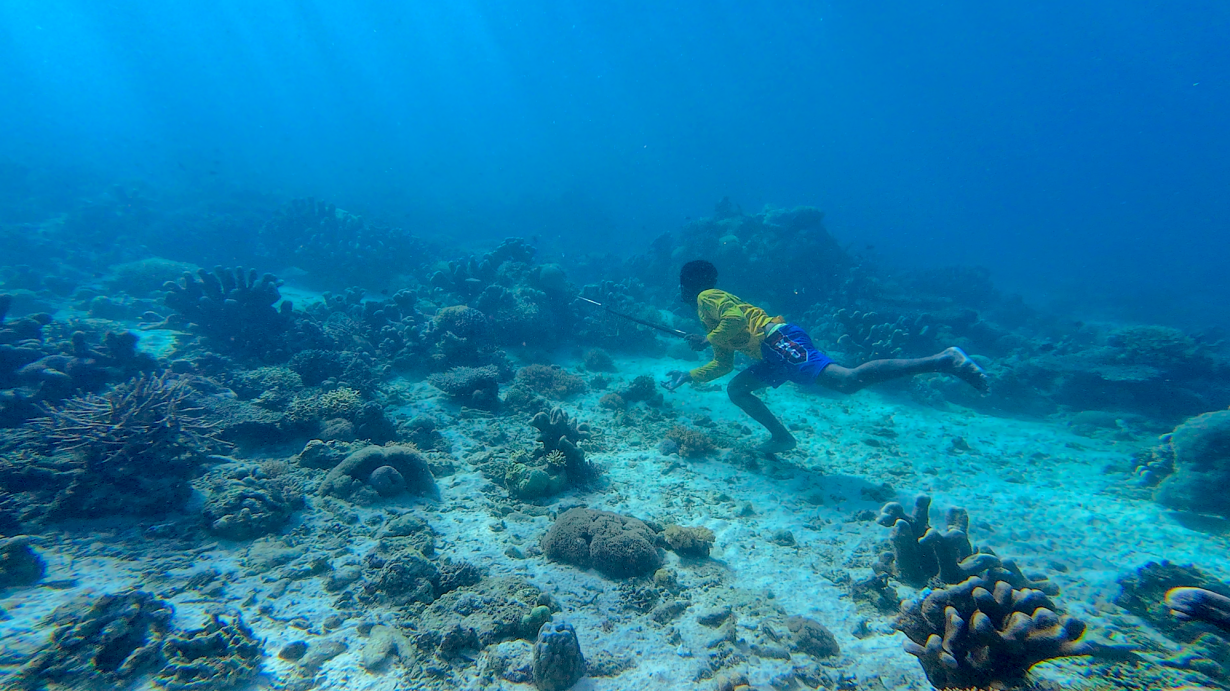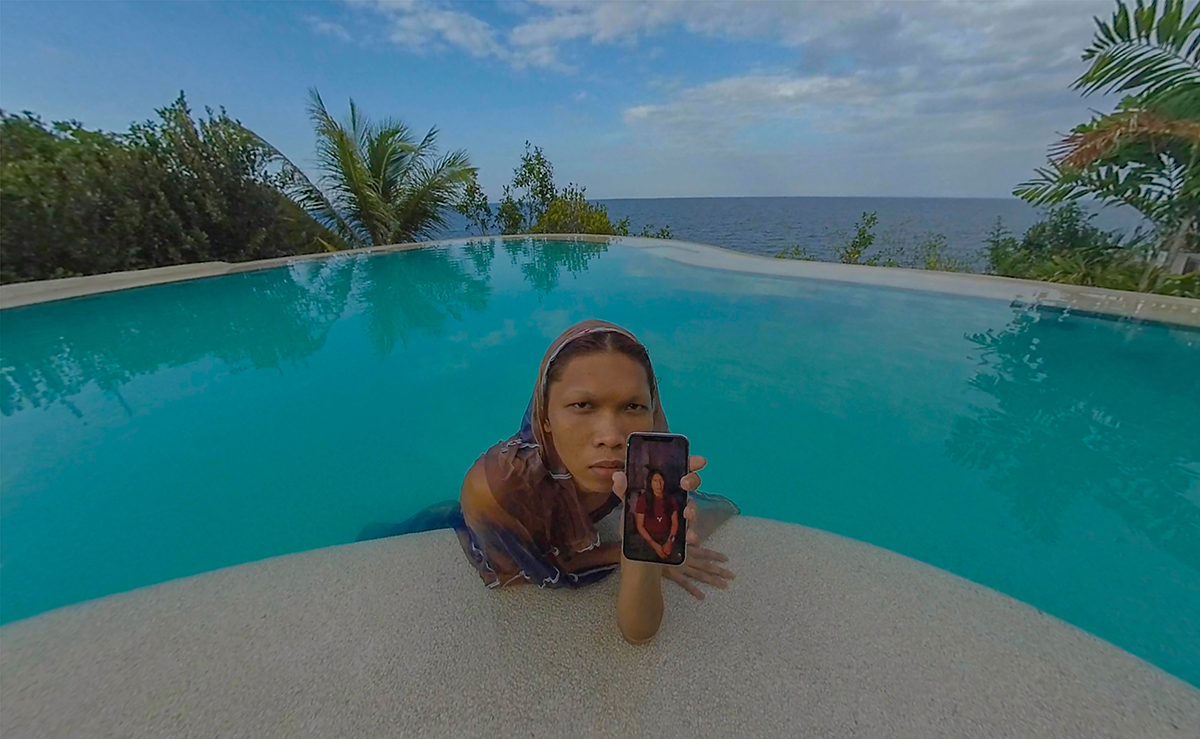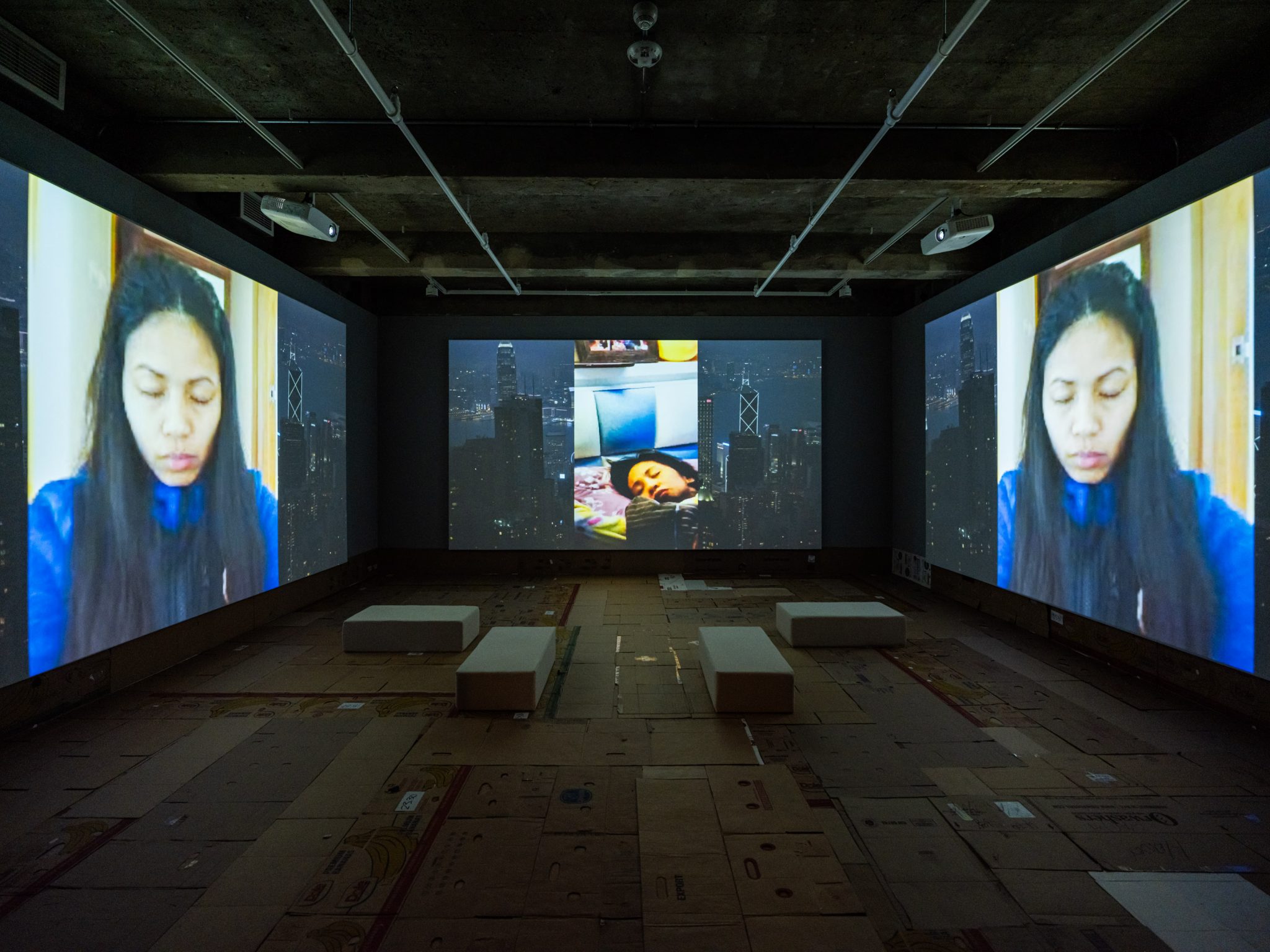Amid travel bans and ICE raids, Comilang’s video installations at CARA, New York offer snapshots of migrants’ resilience
Viewers may feel a distinct floating sensation in Stephanie Comilang’s solo exhibition An Apparition, A Song, for which the galleries on both floors of Center for Art, Research and Alliances have been converted into atmospheric black box viewing rooms. This may occur, for instance, when watching a three-channel video projection of Lumapit Sa Akin, Paraiso (Come to me, Paradise) (2018), a sci-fi documentary, characteristic of the Berlin-based Filipina-Canadian artist’s practice, that has us assume the point-of-view of a drone exploring Hong Kong’s Central Exchange Square, where female domestic workers from the Philippines gather on their days off. Over the course of the half-hour video, the drone’s unstable eye periodically drifts down to these migrant workers, scoping them out as they socialise and exercise in pairs and groups, before being winched up to vertiginous heights, to take in views of the city’s imposing skyline. Likewise, in the single-channel video Search for Life II (2025), viewers find themselves flying over another metropolis, Dubai, and rocking on the waves that lap against the stilted houses of the Badjao sea nomads.

The sensation of weightlessness returns in the VR component of Piña, Why is the Sky Blue? (2022), a mixed-media video installation on which Comilang collaborated with German-Ecuadorianartist Simon Speiser. Near the end of the simulation, the viewer, wearing smart goggles and headphones, glides through a dim library, an incomplete 3D scan of a room lined with holey shelves and stacks of colourless research materials, led by a spirit who appears throughout the simulation in the guise of Lukresia, a real Cebu-based model and designer. If the viewer looks down, they notice that they are soaring over the library’s pitted floor without a body, like an avatar in a first-person videogame. In the context of Comilang’s practice, being suspended in the air, unable to land amid a repository of cultural information, can be read as an expression of the condition of the diasporic subject. At once deterritorialised and barred from assimilating, communities uprooted by settler colonial eviction and the transatlantic slave trade like those examined in Piña, Lumapit Sa Akin and Search for Life II have something of an aerial perspective on the global terrain, with its surfeit of legal and economic glitches and gaps – a perspective through which they often glean knowledge necessary to ensure their survival.

As the US grapples with travel bans, ICE raids and military suppression of demonstrations against these political maneuvers, Comilang’s video installations offer heartening – albeit somewhat vague and mystical – snapshots of migrants’ resourcefulness and resilience in the face of material and metaphorical homelessness. Notably, her crumbling virtual library seems inversely related to an obstruse pineapple-shaped edifice featured in the video component of Piña. As is implied in a series of voiceovers, the otherworldly fruit, with its metallic green and yellow sheen, is the physical embodiment of a fictional feminist AI guide to which activists and healers in the Philippines and Ecuador – four of whom are interviewed in the video – can symbolically upload their wisdom for the benefit of ‘future ones’. In other words, the piña fruit, which also doesn’t touch the ground it grows on, represents their collective memory, that intangible archive where liberatory knowledge may be perpetually preserved.
An Apparition, A Song at Center for Art, Research and Alliances, New York, through 10 August
